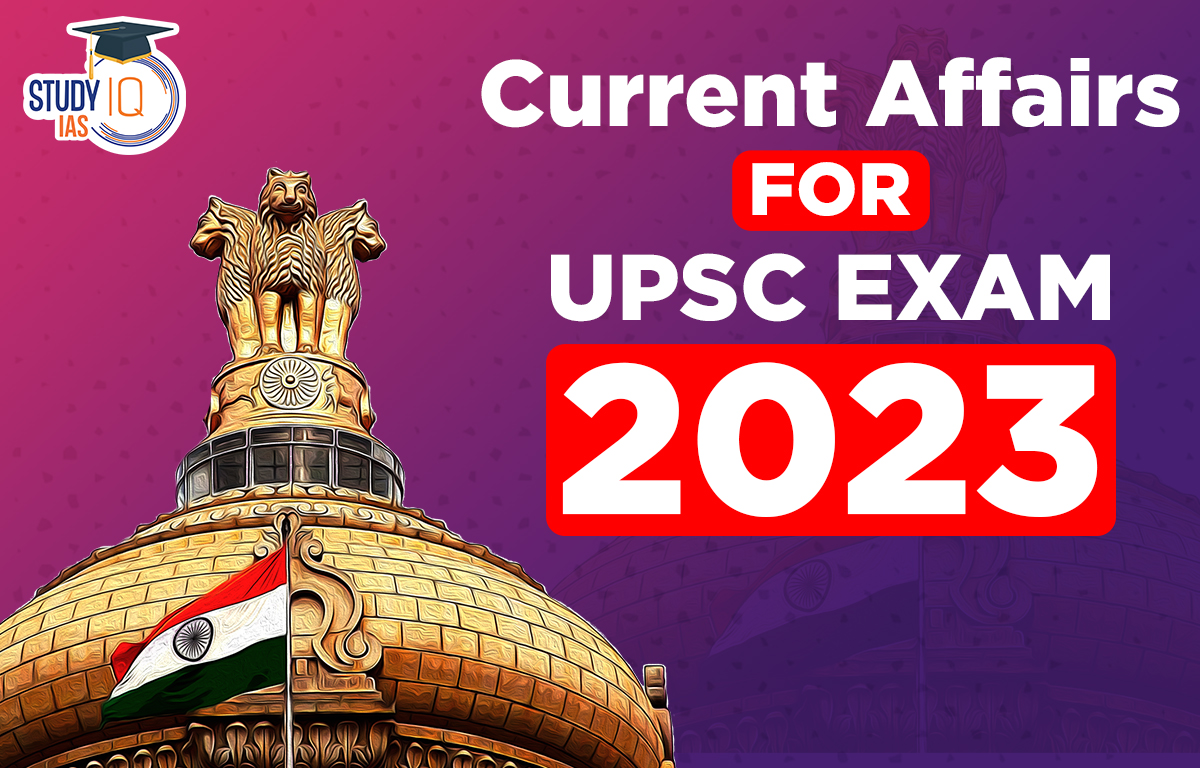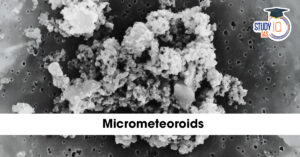Current Affairs 10th April 2023 for UPSC Prelims Exam
The Language Friendship Bridge Project
Context: The Indian Council for Cultural Relations (ICCR) has envisaged a special project called ‘The Language Friendship Bridge’ to expand India’s cultural footprint in nations with which it has historical ties.
About the Language Friendship Bridge project
- The project aimed at creating a pool of experts in languages spoken in countries such as Myanmar, Sri Lanka, Uzbekistan and Indonesia to facilitate better people-to-people exchanges.
- The project plans to train five to 10 people in the official languages of each of these countries, with a focus on translating Indian literature into these languages.
- As of now, the ICCR has zeroed in on 10 languages: Kazakh, Uzbek, Bhutanese, Ghoti (spoken in Tibet), Burmese, Khmer (spoken in Cambodia), Thai, Sinhalese and Bahasa (spoken in both Indonesia and Malaysia).
- Significance of the Project:
- Soft power diplomacy: This project is part of India’s efforts towards soft diplomacy and aims to facilitate stronger people-to-people ties with nations such as Myanmar, Sri Lanka, Uzbekistan, and Indonesia.
- Cultural exchanges: By training people in the official languages of these countries, India can enhance cultural exchanges in the region.
- Economic diplomacy: The project also has the potential to create employment opportunities for experts in these languages and contribute to India’s economic diplomacy.
About the Indian Council for Cultural Relations (ICCR)
- The Indian Council for Cultural Relations (ICCR), is an autonomous organisation of the Government of India, involved in India’s external cultural relations (cultural diplomacy), through cultural exchange with other countries and their peoples.
- It was founded in 1950 by Maulana Abul Kalam Azad, independent India’s first Education Minister.
- ICCR has been assigned the responsibility of facilitating the celebration of the International Day of Yoga by Indian Missions/Posts abroad since 2015.
- ICCR has instituted several awards, which are conferred upon the foreign nationals for their contributions in different fields, under its mandate of promoting India’s cultural relations. Such awards include:
- Distinguished Indologist Award: Award is conferred upon a foreign scholar for his contribution in study, teaching and research in any of the fields of Indian Studies.
- World Sanskrit Award: It recognizes the contribution of foreign scholars in promoting Sanskrit studies.
- Distinguished Alumni Award – Citation and Plaque: Recognizes the achievements of foreign students who studied in India.
Current Affairs 8th April 2023 for UPSC Prelims Exam
PM MUDRA Yojana
Context: About 83% of the loans given under Pradhan Mantri MUDRA Yojana (PMMY) were under Rs 50,000.
About PM MUDRA Yojana
- Pradhan Mantri MUDRA Yojana is a scheme to provide microcredit loans up to 10 lakh to the non-corporate, non-farm small/micro enterprises. They are collateral-free loans.
- PMMY classifies these loans as MUDRA loans. Under PMMY, loans are lent by Commercial Banks, RRBs, Small Finance Banks, MFIs and NBFCs.
- Eligible sectors:
- Manufacturing
- Processing
- Trade
- Service Sector
- Or any other fields whose credit demand is less than Rs 10 lakh.
- Classification of MUDRA loans:
- Shishu: Covering loans up to Rs. 50,000/-
- Kishore: Covering loans from Rs. 50,001 to Rs. 5,00,000/-
- Tarun: Covering loans from Rs. 5,00,001 to Rs. 10,00,000/-
- Criteria for borrowing loans:
- The applicant under the scheme should not be defaulter to any bank or financial institution and should have a satisfactory credit track record.
- He/she must possess the requisite skills/experience/ knowledge to undertake the proposed activity.
- Educational qualification must be assessed based on the nature of the proposed activity, and its requirement.
MUDRA
- MUDRA is a wholly owned subsidiary of SIDBI (Small Industries Development Bank of India). It has an authorised capital of Rs.1000 crore and a paid-up capital of Rs.750 crore.
- It does not lend directly but through financial institutions such as banks and NBFCs.
Identification of Minorities
Context: Supreme Court is hearing a batch of pleas seeking the identification of minorities at the State-level.
Minority in India
- Minorities is not defined anywhere in Constitution.
- Constitutional provisions:
- Article 29: It deals with the protection of interest of minorities. Any section of the citizens residing in the territory of India or any part thereof having a distinct language, script or culture of its own shall have the right to conserve the same.
- Article 30: It deals with the right of minorities to establish and administer educational institutions.
- Article 350 A: There shall be a Special Officer for linguistic minorities to be appointed by the President.
- It shall be the duty of the Special Officer to investigate all matters relating to the safeguards provided for linguistic minorities under the constitution and report to the President upon those matters.
- Identification: Central Government notifies minority communities at the national level in consultation with various stakeholders under Section 2 (c) of National Commission for Minorities (NCM), Act, 1992.
- Notified as minority communities: Christians, Sikhs, Muslims, Buddhists, Parsis and Jains.

Previous Supreme Court Judgment
- TMA Pai Case: The apex Court stated that for the purposes of Article 30, the rights of minorities to establish and administer educational institutions, religious and linguistic minorities have to be considered state-wise.
- Bal Patil Case: In 2005, the SC in its judgment in ‘Bal Patil’ referred to the TMA Pai ruling.
- The legal position clarifies that henceforth the unit for determining status of both linguistic and religious minorities would be ‘state’.
National Commission for Minorities (NCM)
- Under the National Commission for Minorities Act of 1992, the Union Government established NCM to protect and promote the welfare of the 6 religious minorities.
- It is in line with the United Nations Declaration of 1992 which states that “States shall protect the existence of the National or Ethnic, Cultural, Religious and Linguistic identity of minorities within their respective territories and encourage conditions for the promotion of that identity.”
About National Commission for Minority Education Institution (NCMEI) Act, 2004
- It gives the minority status to the educational institutions on the basis of six religious communities notified by the government.
Livestock Insurance
Context: Central Government is considering a comprehensive livestock insurance scheme on the line of Prime Minister’s Fasal Bima Yojana.
About Livestock Insurance Scheme
- It was implemented on a pilot basis during 2005-06 and 2006-07 of the 10th Five Year Plan and 2007-08 of the 11th Five Year Plan in 100 selected districts.
- The scheme was later implemented on a regular basis from 2008-09 in 100 newly selected districts of the country.
- It is a Centrally sponsored scheme and is being managed by the respective State Livestock Development Boards.
- Funding: 50% premium is borne by GoI whereas remaining 50% is shared 50:50 by the State Government and the beneficiaries.
- It was later subsumed under the Sub-mission on Innovation and Extension on livestock development of National Livestock Mission.
- Need for new scheme: At present, less than 1% of the country’s cattle population is insured.
- Not even a single animal was insured during 2022-23, whereas during 2021-22, 1,74,061 were insured.
- It will replace the present Livestock Insurance Scheme.
Status of Livestock in India: Highlight of 20th Livestock Census
- Total population: The total Livestock population is 536.76 million in the country showing an increase of 4.8% over Livestock Census-2012.
- Urban and rural: The total Livestock population in rural and urban area is 514.11 million and 22.65 million respectively with percentage share of 95.78% for rural and 4.22% for urban area.
- Bovine population: Total Bovine population (Cattle, Buffalo, Mithun and Yak) is 303.76 million in 2019 which shows an increase of 1.3% over the previous census.
- The total number of Cattle in the country is 193.46 million in 2019 showing an increase of 1.3 % over previous Census.
- Exotic and indigenous breed: The Exotic/Crossbred and Indigenous/Non-descript Cattle population in the country is 51.36 million and 142.11 million respectively.
- The Indigenous/Non-descript Female Cattle population has increased by 10% in 2019 as compared to previous census.

Telecom Regulatory Authority of India
Context: TRAI has blocked 120 headers operated by a group linked to a Chinese entity.
About Telecom Regulatory Authority of India (TRAI)
- It is a statutory body established in 1997 through the Telecom Regulatory Authority of India Act, 1997, to regulate telecom services, including fixation/revision of tariffs for telecom services.
- Objectives: The main objective of TRAI is to provide a fair and transparent policy environment which promotes a level playing field and facilitates fair competition.
- Headquarters: The head office of the Telecom Regulatory Authority of India (TRAI) is located at New Delhi.
- Composition of TRAI:
- Members: The TRAI consists of a Chairperson, two whole-time members and two part-time members, all of whom are appointed by the Government of India.
- Chairperson: The Chairperson has the powers of general superintendence.
- He/She presides over the meetings of the TRAI.
- Members: The TRAI consists of a Chairperson, two whole-time members and two part-time members, all of whom are appointed by the Government of India.
- Removal of Members: If he/she:
- has been adjudged an insolvent
- has been convicted of an offence which involves moral turpitude
- has become physically or mentally incapable of acting as a member
- has abused his/her position, rendering his/her continuance in office prejudicial to the public interest.
- TRAI Meetings:
- The Chairperson has the power of organising the meetings at times. He/She presides over the meetings.
- In the absence of the chairperson, the vice-chairperson presides over the meetings.
- The decisions in the meetings are taken by the majority vote of the members present.
- In the event of an equality of votes, the Chairperson (or the member presiding the meeting) gives a casting vote.
- Responsibilities:
- Ensuring the compliance of terms and conditions of licence.
- Ensuring the technical compatibility and effective interconnection between different service providers.
- Laying down the standards of quality of service to be provided by the service providers.
- Ensuring the quality of service and conducting the periodical surveys of such services.
- Recommendations: The recommendations of the TRAI are not binding upon the Central Government.
Autoimmune Diseases
Context: Evidence suggests that obese individuals have a higher risk of developing autoimmune diseases such as type 1 diabetes.
About Autoimmune Diseases:
- Autoimmune diseases arise from an abnormal immune response of the body against substances and tissues normally present in the body (autoimmunity).
- This may be restricted to certain organs or involve a particular tissue in different places.
- Normally our immune system produces proteins called antibodies that protect the body from these invaders.
- Autoimmune means our immune system cannot tell the difference between these foreign invaders and our body’s healthy tissues (“auto” means “self”) and creates auto-antibodies that attack and destroy healthy tissue.
- These auto-antibodies cause inflammation, pain, and damage in various parts of the body.

More Information:
- A possible mechanism that could explain this connection — metabolic overload that suppresses immunoregulation and induces inflammatory responses, thereby increasing the risk of autoimmunity.
- Autoimmune diseases are more common in females with a female-to male ratio ranging from 10:1 to 1:1.
- They can occur at any age but are more common during the reproductive years.
- It has been estimated that autoimmune diseases are among the top ten leading causes of death among women in all age groups up to 65 years. A substantial minority of the population suffers from these diseases, which are often chronic, debilitating, and life-threatening.
- An autoimmune disease also increases the risk of comorbidities like cancer, stroke, mental illnesses, infections and risk of early mortality (shortened life span).
- There are more than 80 illnesses caused by autoimmunity.
They can be broadly categorised into two groups:
- Organ-specific disease (involving only one organ) in which the immune response is directed toward antigens present in a single organ. Examples are autoimmune thyroiditis, myasthenia gravis, multiple sclerosis, Diabetes Mellitus Type I, etc.
- Systemic disease in which the immune system attacks self-antigens in several organs e.g. systemic lupus erythematosus is characterised by inflammation of the skin, mucus membranes, joints, kidneys, brain, intestines, etc.
Risk Factors
- Genetic: Some autoimmune diseases run in families, but it doesn’t mean that Autoimmune Diseases are hereditary.
- Environmental factors: like sunlight, certain chemicals (pesticides, pristane, mercury, silica, etc), cigarette smoking, air pollution and viral or bacterial infections.
- Gender: Women are genetically predisposed to Autoimmune Diseases because of their sex hormones and the X chromosome.
- Smoking: It is a proven risk factor for the development of rheumatoid arthritis, systemic lupus erythematosus, primary biliary cirrhosis, etc.
- Obesity: The relationship between obesity, adipokines (compounds secreted by the fat tissue), and immune-related conditions like rheumatoid arthritis, type-1 diabetes, psoriasis, psoriatic arthritis, multiple sclerosis and Hashimoto thyroiditis has been known.
- Vitamin D deficiency: Vitamin D is known to modulate immune responses. Its deficiency is found to be associated with an increased risk of loss of immune tolerance.
- Stress: A few studies have proven the link between stress and autoimmunity.
Symptoms:
- Fever, malaise, fatigue, arthralgia etc.
- The most common autoimmune rheumatological disease is rheumatoid arthritis which predominantly involves small joints of hands and feet with significant early morning stiffness of more than 30 minutes.
- If left untreated it results in deformity, disability, and death.
Treatment:
- Autoimmune Diseases are treatable conditions but require specialised multidisciplinary care.
- The treatment of autoimmune diseases is typically with immunosuppression—medication that decreases the immune response.


 Micrometeoroids: Tiny Space Particles, M...
Micrometeoroids: Tiny Space Particles, M...
 India Needs a National Insolvency Tribun...
India Needs a National Insolvency Tribun...
 Unlocking the Potential of India–Afric...
Unlocking the Potential of India–Afric...

























